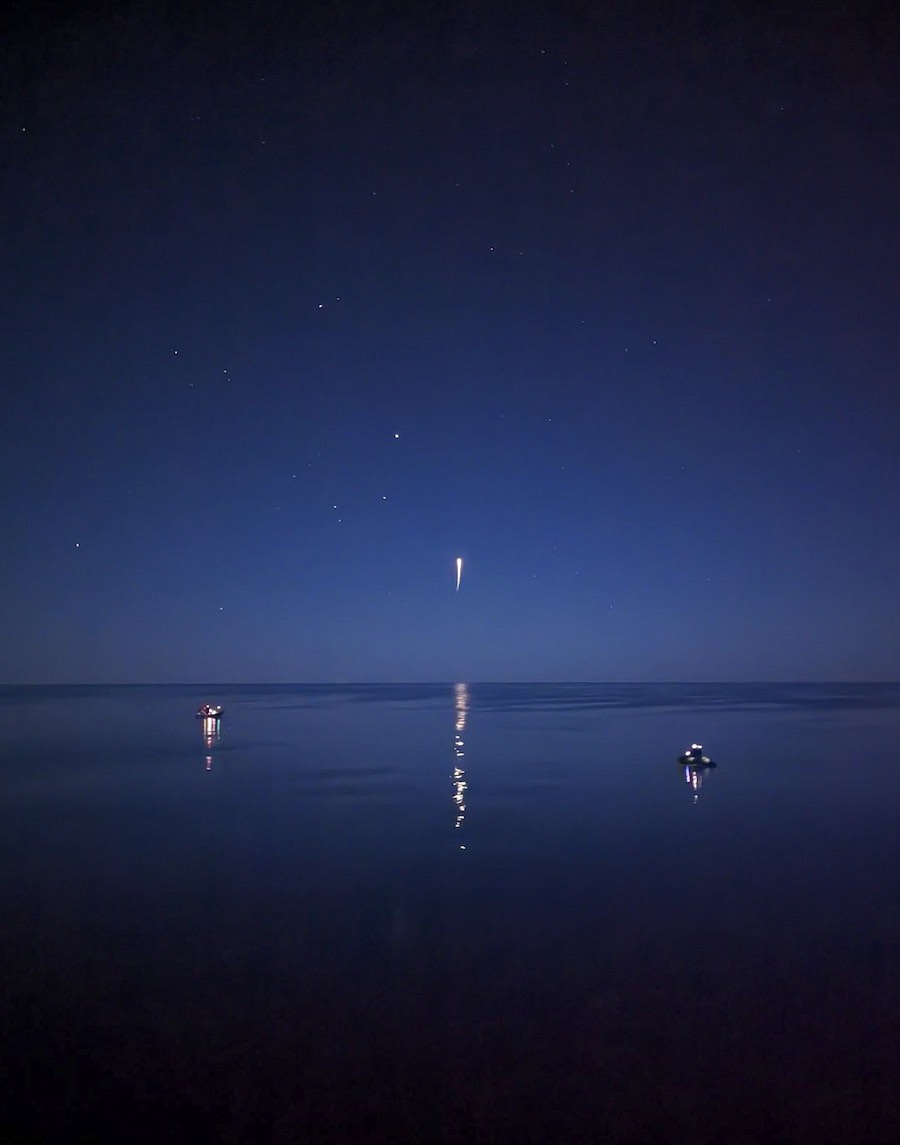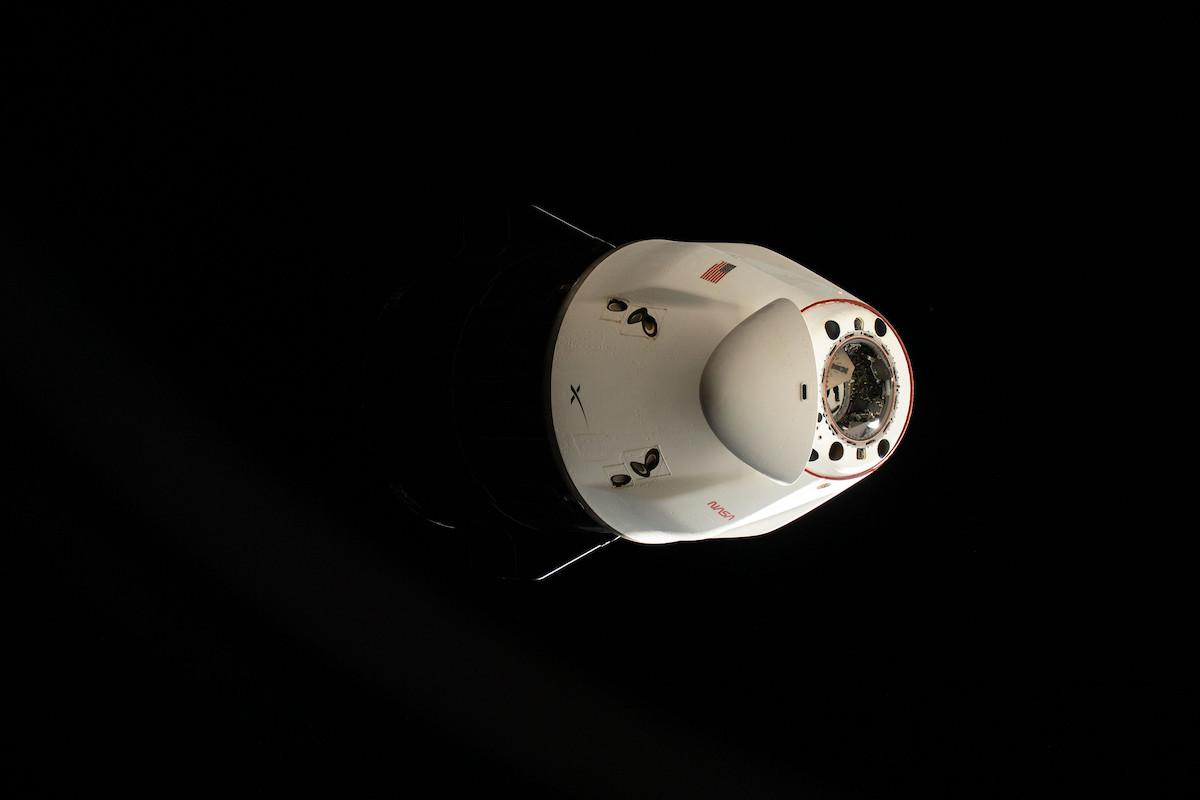
A SpaceX-owned Dragon cargo capsule parachuted into the Gulf of Mexico early Wednesday, returning 4,400 pounds of science equipment and hardware from the International Space Station after a 45-day resupply mission.
The gumdrop-shaped cargo capsule splashed down in the Gulf of Mexico off the coast of Tampa, Florida, at 5:19 a.m. EST (1019 GMT) Wednesday. The Dragon spacecraft plunged into Earth’s atmosphere over the United States, flying from northwest to southeast as temperatures outside the ship’s heat shield reached 3,500 degrees Fahrenheit (1,900 degrees Celsius).
Four main parachutes opened to slow the capsule to a gentle splashdown. SpaceX’s teams based on the recovery ship “Megan” pulled the spacecraft out of the sea for a trip back to Port Canaveral, Florida, where the Dragon capsule will be transported to a refurbishment facility at Cape Canaveral Space Force Station for preparations for a future mission.
The Dragon spacecraft returned to Earth with a protective vest that was tested by astronauts on the International Space Station to measure how well the garment protects against dangerous radiation. The mission also brought home a plant growth experiment and other scientific research specimens.
The capsule also hauled home high pressure oxygen and nitrogen gas tanks that will be refilled on the ground for a future launch, a catalytic reactor for the station’s life support system, a pressure control and pump assembly for the urine processing system, multifiltration beds for the station’s water processor, a mass spectrometer and hydrogen sensor, and potable water dispenser filters.
The hardware will be refurbished on the ground for a future launch back to the International Space Station.

The Dragon spacecraft undocked from the space station’s Harmony module Monday, then fired its Draco thrusters for a series of departure burns to back away from the complex. The departure set up for a deorbit burn ahead of Wednesday morning’s re-entry and splashdown.
The unpiloted supply ship launched Nov. 26 from NASA’s Kennedy Space Center in Florida, riding a Falcon 9 rocket into orbit to begin pursuit of the space station. The Dragon spacecraft autonomously linked up with the station Nov. 27, delivering more than 7,700 pounds of supplies and experiments.
The mission was SpaceX’s 26th resupply flight since 2012 to deliver cargo to the space station, and was the first flight of SpaceX’s newest Cargo Dragon capsule, designated Dragon C211. This is the final reusable Cargo Dragon spacecraft SpaceX plans to build to meet NASA’s cargo transportation needs for the station through 2030.
For the trek to the space station, the CRS-26 mission was packed with hardware, supplies, and experiments for the space station and the seven-person crew living on-board the complex. The largest element of the cargo load was NASA’s second pair of new roll-out solar arrays to augment the space station’s power system.
NASA astronauts Frank Rubio and Josh Cassada completed two spacewalks last month to install the new solar array wings, which will augment the lab’s electrical production capability for the next decade. The spacecraft also carried holiday food and treats, and eight CubeSats from teams in Brazil, the United States, Canada, Italy, and Taiwan that will be deployed later outside the space station.
Email the author.
Follow Stephen Clark on Twitter: @StephenClark1.
